This is named after the crop Battersea was famous for producing during the 19th century, when the area was covered with market gardens. The asparagus was sold in what were popularly known as ‘Battersea bundles’. Battersea was first recorded in a charter of 693AD granting Batrices Ege to the Abbess of Barking. The name means Badric’s Island, since, at this time, water or marshland surrounded the site.
A framed piece of text about The Asparagus and Battersea.
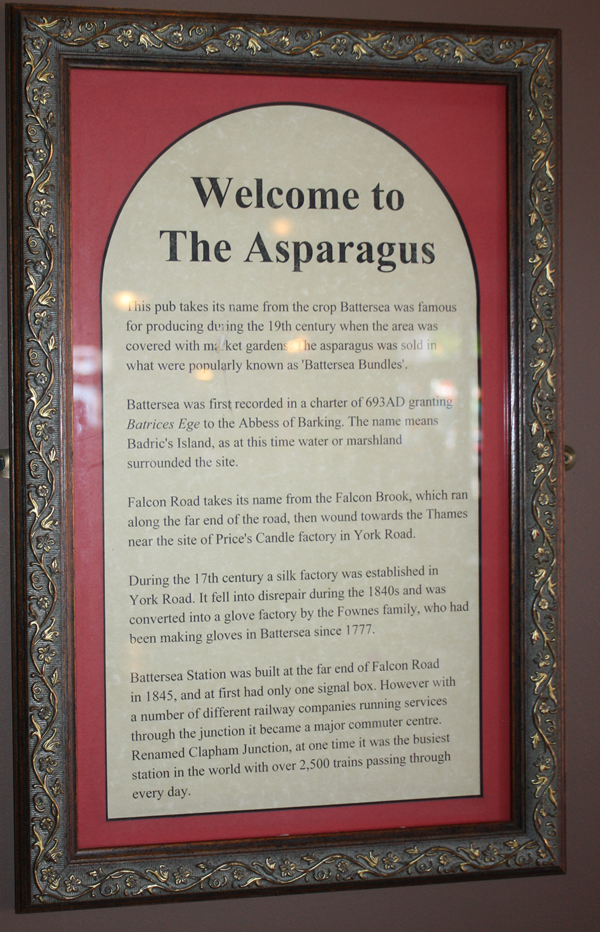
The text reads: This pub takes its name from the crop Battersea was famous for producing during the 19th century when the area was covered with market gardens. The asparagus was sold in what were popularly known as ‘Battersea Bundles’.
Battersea was first recorded in a charter of 693AD granting Batrices Ege to the Abbess of Barking. The name means Badric’s Island, as at this time water or marshland surrounded the site.
Falcon Road takes its name from the Falcon Brook, which ran along the far end of the road, then wound towards the Thames near the site of Price’s Candle factory in York Road.
During the 17th century a silk factory was established in York Road. It fell into disrepair during the 1840s and was converted into a glove factory by the Fownes family, who had been making gloves in Battersea since 1777.
Battersea Station was built at the far end of Flacon Road in 1845, and at first had only one signal box. However with a number of different railway companies running services through the junction in became a major commuter centre. Renamed Clapham Junction, at one time it was the busiest station in the world with over 2500 trains passing through every day.
A chalk board detailing the name of The Asparagus.
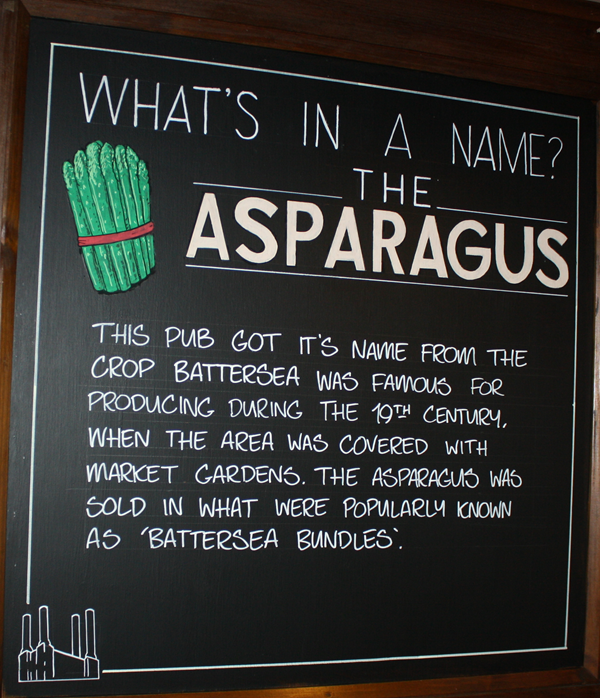
The text reads: This pub got its name from the crop Battersea was famous for producing the 19th Century, when the area was covered with market gardens. The asparagus was sold in what were popularly known as ‘Battersea Bundles’.
A framed print and text about William Wilberforce and Reverend Joseph Hughes.
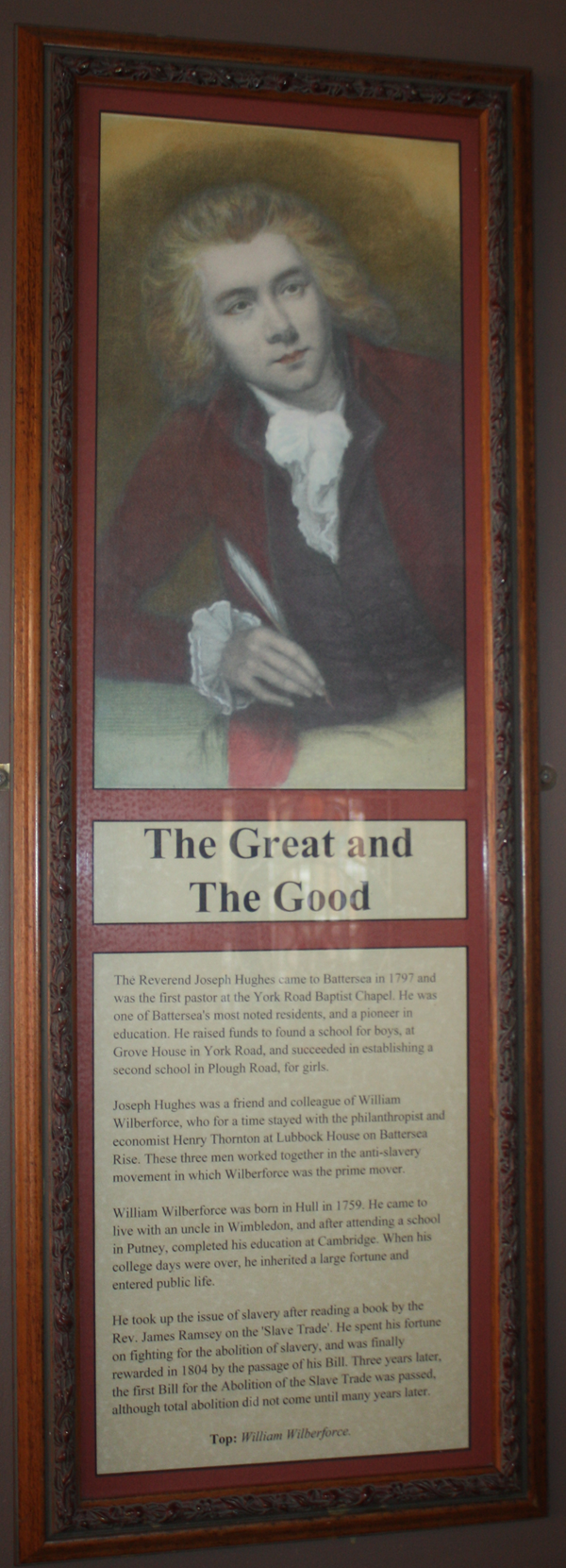
The text reads: The Reverend Joseph Hughes came to Battersea in 1797 and was the first pastor at the York road Baptist Chapel. He was one of Battersea’s most noted residents, and a pioneer in education. He raised funds to found a school for boys, at Grove House in York Road, and succeeded in establishing a second school in Plough Road, for girls.
Joseph Hughes was a friend and colleague of William Wilberforce, who for a time stayed with the philanthropist and economist Henry Thornton at Lubbock House on Battersea Rise. These three men worked together in the anti-slavery movement in which Wilberforce was the prime mover.
William Wilberforce was born in Hull in 1759. He came to live with an uncle in Wimbledon, and after attending a school in Putney, completed his education at Cambridge. When his college days were over, he inherited a large fortune and entered public life.
He took up the issue of slavery after reading a book by the Rev. James Ramsey on the ‘Slave Trade’. He spent his fortune on fighting for the abolition of slavery, and was finally rewarded in 1804 by the passage of his Bill. Three years later, the first Bill for the Abolition of the Slave Trade was passed, although total abolition did not come until many years later.
Top: William Wilberforce.
Framed prints and text about Mrs Stirling.
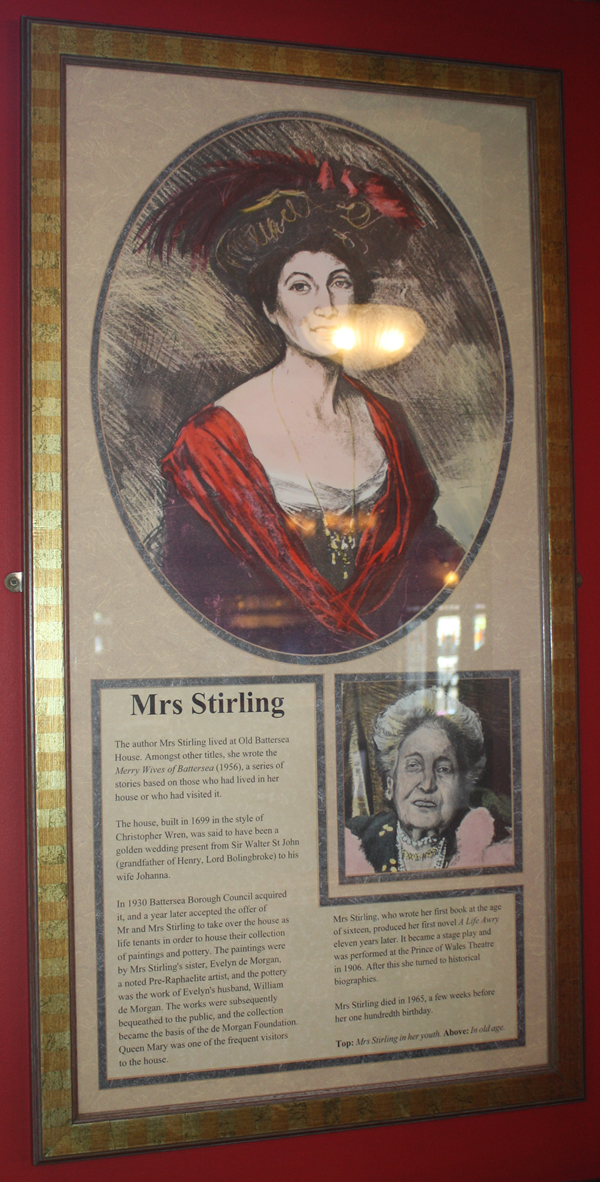
The text reads: The author Mrs Stirling lived at Old Battersea House. Amongst other titles, she wrote the Merry Wives of Battersea (1956), a series of stories based on those who had lived in her house or who had visited it.
The house, built in 1699 in the style of Christopher Wren, was said to have been a golden wedding present from Sir Walter St John (grandfather of Henry, Lord Bolingbroke) to his wife Johanna.
In 1930 Battersea Borough Council acquired it, and a year later accepted the offer of Mr and Mrs Stirling to take over the house as life tenants in order to house their collection of paintings and pottery. The paintings were by Mrs Stirling’s sister, Evelyn de Morgan, a noted pre-Raphaelite artist, and the pottery was the work of Evelyn’s husband, William de Morgan. The works were subsequently bequeathed to the public, and the collection became the basis of the de Morgan Foundation. Queen Mary was one of the frequent visitors to the house.
Mrs Stirling, who wrote her first book at the age of sixteen, produced her first novel A Life Awry eleven years later. It became a stage play and was performed at the Prince of Wales Theatre in 1906. After this she turned to historical biographies.
Mrs Stirling died in 1965, a few weeks before her one hundredth birthday.
Top: Mrs Stirling in her youth
Above: In old age.
A framed print and text about Lord Bolingbroke.
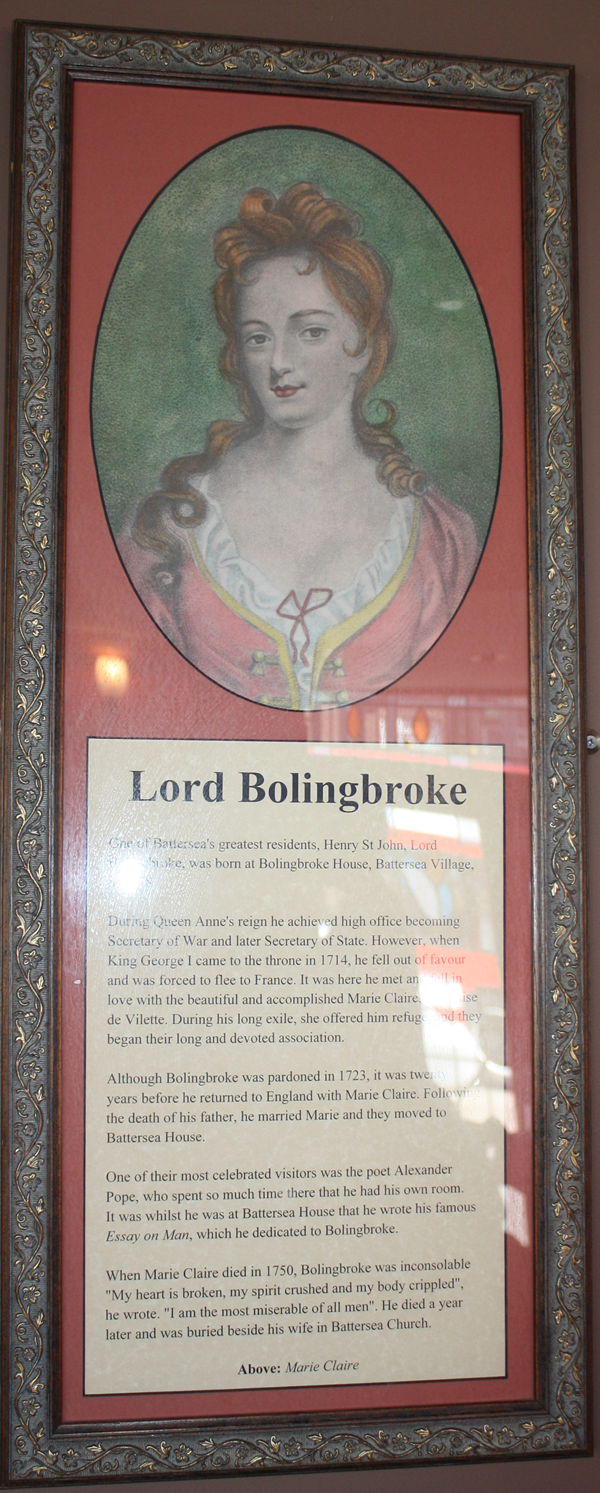
The text reads: One of Battersea’s greatest residents, Henry St John, Lord Bolingbroke, was born at Bolingbroke House, Battersea Village.
During Queen Anne’s reign he achieved high office becoming Secretary of War and later Secretary of State. However, when King George I came to the throne in 1714, he fell out of favour and was forced to flee to France. It was here he met and fell in love with the beautiful and accomplished Marie Claire, Marquise de Vilette. During his long exile, she offered him refuge, and they began their long and devoted association.
Although Bolingbroke was pardoned in 1723, it was twenty years before he returned to England with Marie Claire. Following the death of his father, he married Marie and they moved to Battersea House.
One of the most celebrated visitors was the poet Alexander Pope, who spent so much time there that he had his own room. It was whilst he was at Battersea House that he wrote his famous Essay on Man, which he dedicated to Bolingbroke.
When Marie Claire died in 1750, Bolingbroke was inconsolable “My heart is broken, my spirit crushed and my body crippled”, he wrote. “I am the most miserable of all men”. He died a year later and was buried besides his wife in Battersea Church.
Above: Marie Claire.
A framed print of Lord Bolingbroke and a photograph of the last of Bolingbroke House, c1920.
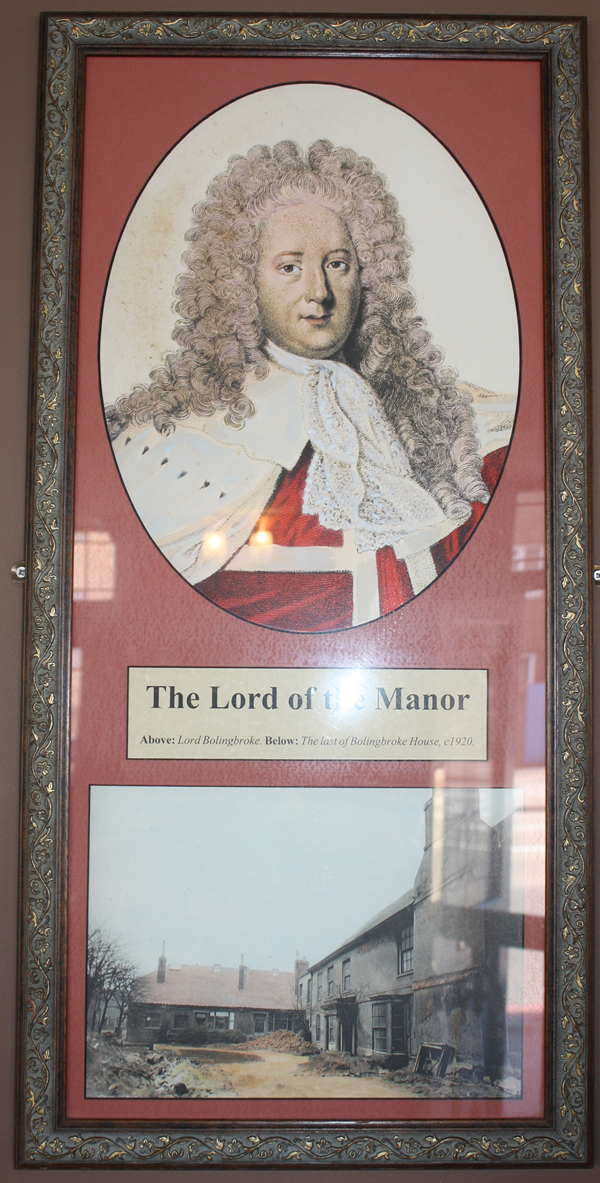
A framed piece of text about York Road.
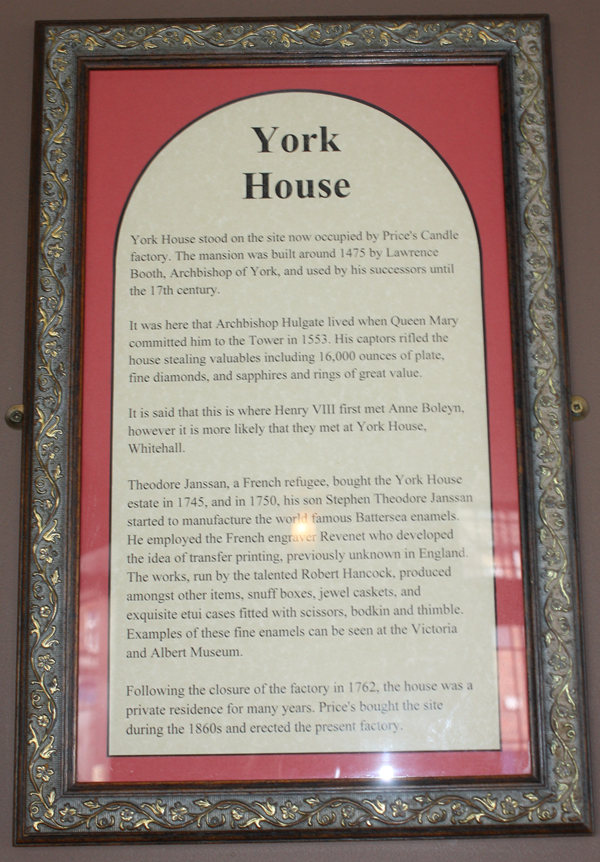
The text reads: York House stood on the site now occupied by Price’s Candle factory. The mansion was built around 1475 by Lawrence Booth, Archbishop of York, and used by his successors until the 17th century.
It was here that Archbishop Hulgate lived when Queen Mary committed him to the Tower in 1553. His captors rifled the house stealing valuables including 16,000 ounces of plate, fine diamonds, and sapphires and rings of great value.
It is said that this is where Henry VIII first met Anne Boleyn, however it is more likely that they met at York House, Whitehall.
Theodore Janssan, a French refugee, bought the York House estate in 1745, and in 1750, his son Stephen Theodore Janssan started to manufacture the world famous Battersea enamels. He employed the French engraver Revenet who developed the idea of transfer printing, previously unknown in England. The works, run by the talented Robert Hancock, produced amongst other items, snuff boxes, jewel caskets, and exquisite etui cases fitted with scissors, bodkin and thimble. Examples of these fine enamels can be seen at the Victoria and Albert Museum.
Following the closure of the factory in 1762, the house was a private residence for many years. Price’s bought the site during the 1860s and erected the present factory.
A framed photograph of Battersea Park Road, c1920.
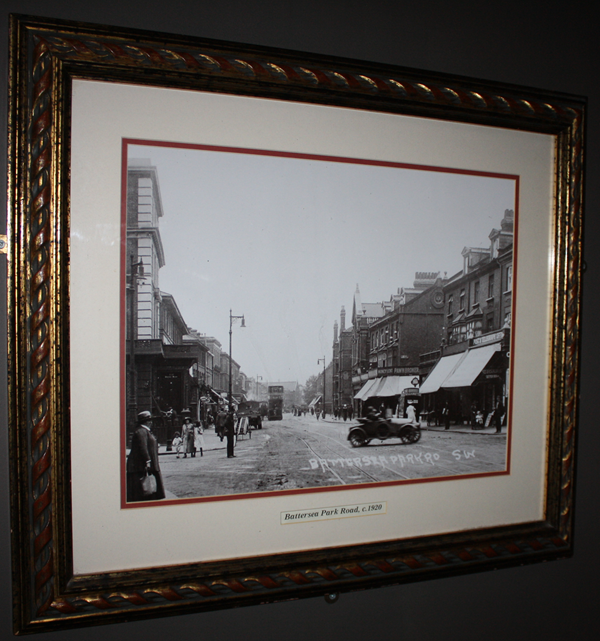
A framed photograph of Old Battersea House and St John’s College, c1930 – Mrs Sterling’s home until 1965.
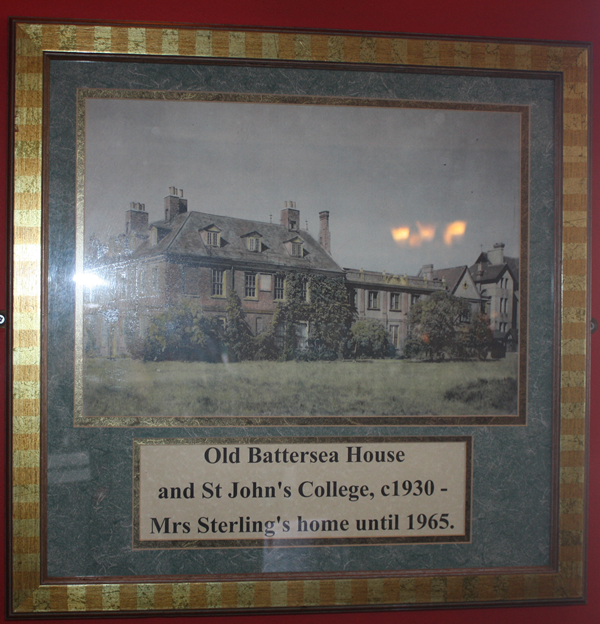
A framed water colour painting of Albert Bridge (Battersea Bridge).
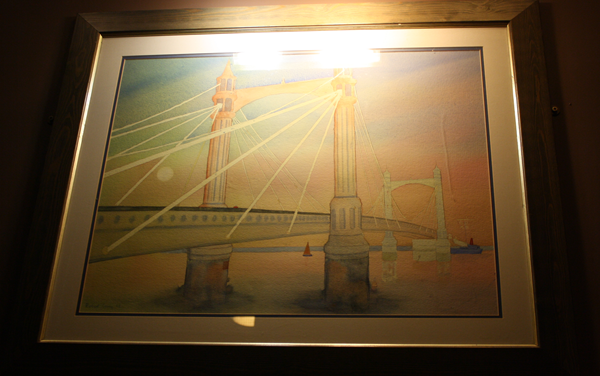
External photograph of the building – main entrance.
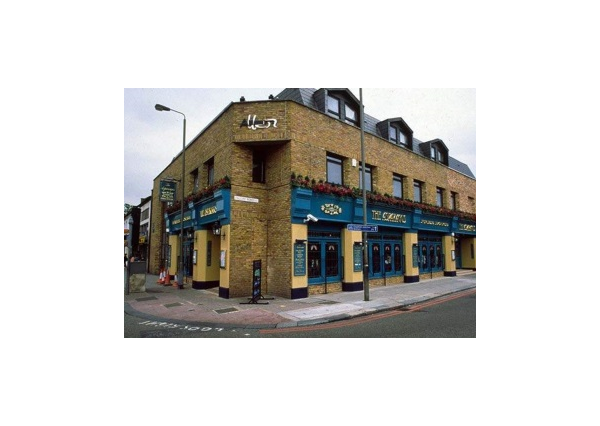
If you have information on the history of this pub, then we’d like you to share it with us. Please e-mail all information to: pubhistories@jdwetherspoon.co.uk